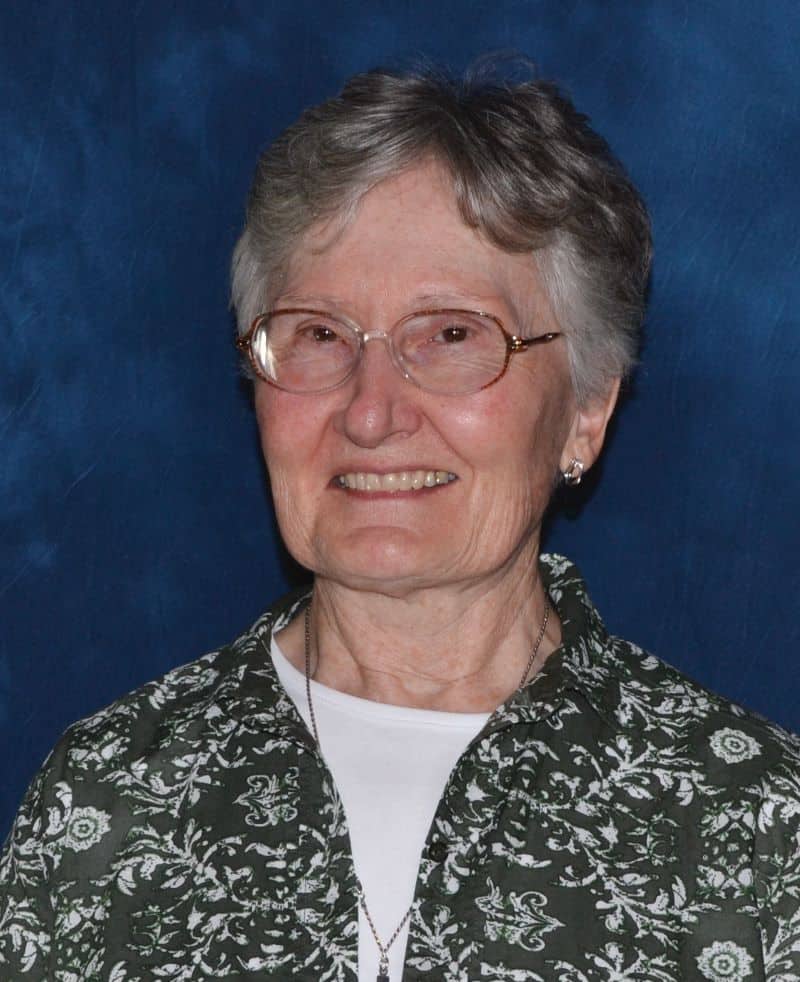When the Fuel the Body, Fuel the Soul program met on May 9th, Sister Nancy Marsh showed participants her recipe for soda can chicken. Following the recipe, Sister Mary McKay gave a presentation entitled, “The Living Tradition.” Find the soda can chicken recipe and a recording of Sister Mary’s presentation below!
Fuel the Body, Fuel the Soul is a monthly series held on the second Thursday of the month. Each Zoom session features an introduction to a healthy recipe presented by a sister, a presentation focusing on a spiritual topic and discussion and prayer with a community of young women from around the country. Register once for any/all sessions. There is no cost to attend.

Soda Can Chicken Recipe
by Sister Nancy Marsh, CSJ

Time: 70 minutes
Servings: 4-6
Ingredients:
- 1 whole chicken
- 1 can of soda or beer
- Fresh herbs
- Salt
- Pepper
- BBQ sauce of choice
Directions: Salt and pepper the chicken inside and out. Take a can of preferred soda or beer and pour out 1/4 of the contents. Place fresh herbs into the can. Shove the can up the bottom of the chicken that when the can is upright, the legs are pointing down. Balance the chicken in a large, metal pan. Glaze in BBQ sauce. Grill or bake covered for 1 hour or until the chicken reaches an internal temperature of 165°F. Baste 2-3 times with pan drippings while cooking. Remove chicken from the oven or grill, carefully remove the can and carve as desired. Enjoy!

The Living Tradition
by Sister Mary McKay, CSJ
First, a couple of notes on this title “The Living Tradition”:
- Whose tradition? I have in mind the Catholic Church, or Catholicism, which is a church and a culture.
- What does the term “living” imply about this tradition? That it is not dead!
When you hear the word “tradition,” what comes to mind? This word brings up images and descriptions of certain ways of behaving, ways of speaking, ways of dressing, ways of celebrating which have been around for a long time and are usually identified with a particular group. For example, there are family traditions, cultural traditions, political traditions, and religious traditions.
Many folks describe the Catholic religion as “traditional.” Yes, there are many aspects of Catholicism that you might say are “traditional.” Some go back to the earliest era of Christianity, for example a table or altar as the location for the Eucharistic Liturgy, and the use of bread in the Liturgy “in memory of Jesus.” The celebration of the Liturgy is perhaps the most ancient tradition in Catholicism. Many aspects of Catholicism which have developed in the course of history are now seen by many as “traditional” – a crucifix in the sanctuary, the special robes worn by the priest and sometimes the altar servers, statues of saints inside and outside the church.
However, we ask ourselves: Are these “traditional” behaviors – how we celebrate the Liturgy, how we design our churches – being expressed today exactly as they were expressed in ancient Christianity, or in the Middle Ages, or after the Protestant Reformation of the 16th century? Of course, we realize the answer is no.
Why not? Why does the Catholic church look different today than it did in the year 300 or the year 1550 or maybe 1950? There are a few ways to answer this question, and I will reflect on two answers: evolution and lived experience.
Evolution: First, I want to acknowledge that there are some Christian groups that do not accept this theory that everything “evolves,” rather they believe in a literal reading of the Story of Creation that we find in the Book of Genesis (the “seven days of Creation”). They do not agree with the concept that all of Creation is in the ongoing process of evolving. Along with millions of others, I have confidence in the huge body of research and teaching that accepts and explains the idea of evolution. You have probably studied this idea in a science or philosophy or theology class.
Evolution is a major theme in what is called “the new cosmology” – which presents a vision of reality as always unfolding, evolving in ways that support survival and development. Those species, and in a parallel way those groups and organizations, which adapt to changes in their environment have a better chance of surviving and thriving.
This is the first reason why Catholicism is still a living reality, because it has allowed itself to evolve in response to changes in its environment. If you are a student of history, you might think that the Church has been too defensive, too committed to self-protection and not very open to evolution. That’s a fair criticism; there are certainly places and periods when the Catholic Church put up an “invisible wall” around itself. On the other hand, that kind of attitude might have been a factor in the Church’s survival during periods of opposition and persecution.
Yet in the course of Catholicism’s history, there were also many places and periods when the Church was not being persecuted and was able to thrive – to learn from and contribute to a variety of cultures across the world. By the end of the first millennium (year 1000), Catholicism was clearly multicultural. This opens the door to the second factor I mentioned a few minutes ago in response to the question, “Why does Catholicism look different today than it did in earlier eras?” – lived experience.
In this reflection, the term “lived experience” is focused on human beings. What is a person’s experience of her or his life? How does she understand herself in her local context and in the larger world? What is she learning about life? and so forth.
I suggested a minute ago that as Christianity spread beyond the place of its origins, and with the passing of time crossed continents and oceans, the church became multicultural – because the missionaries encountered a variety of people who all brought with them their own worldviews, languages, and traditional behaviors. Admittedly, there were instances in which missionaries brought with them not only the Gospel but also an expectation that the converts would drop some aspects of their culture when they entered the church. Being an optimist, I think that the sheer difference in numbers would have an effect on the missionaries, cautioning them not to try to change major aspects of the culture that is already in place.
A good example of respecting the “lived experience” of locals is St. Francis Xavier, among the first group of companions of Ignatius Loyola in the mid-1500s, a group which became the Jesuit order. Francis was missioned by Ignatius to “go East,” and he went to India, Malaysia and Japan to preach the Gospel. He believed that he, and the Church, needed to adapt to the local culture. In India, he worked with a group of translators to render the catechism in Tamil, one of the languages of India, and he struggled to read it with those interested in this new teaching. When ministering in Japan, Francis Xavier expressed his admiration for the people, and he worked to educate Japanese candidates for the priesthood. Francis Xavier adapted his way of relating to the people because he respected their lived experience. By the twentieth century, this principle of adaptation was a widely shared value among Catholic missionaries.
A more recent and maybe more relevant example of Catholicism’s openness to change is the Second Vatican Council which occurred in 4 sessions between 1962-1965. Pope John 23rd wanted to “update” and “renew” the Catholic Church so that Catholicism would be more in tune with the modern world. In his words, the church needed to “open the windows and let fresh air in.” Those of us who lived through that time can remember the initial shock and then the excitement as bishops from all over the world gathered to study, dialogue with each other, and pray for renewal. The most recent ecumenical council before that, the First Vatican Council, had met in 1869-70, almost a hundred years earlier.
Pope John, and millions of Catholics who agreed with him, believed it was time to study the lived experience of twentieth-century people and review ourselves and our teachings in light of contemporary realities. The result was many areas of development in Catholic teachings – an evolution into contemporary modes of thinking about all reality and God’s relationship with us within that evolving context. (Let me add: If you have never had a course, or read the documents published by the Second Vatican Council, give yourself that gift someday. Those of you who are younger probably take for granted the new perspectives that we were blessed with by that council.)
So now I turn back to the title of this reflection, “The Living Tradition.” For these few minutes, I have been sharing my thoughts about how Catholicism is both traditional and open to development. Tradition respects the past, but if traditions are cut off from lived experience and become rigid, they lose their meaning and no longer contribute to fullness of life. So, if we want to have a “Living Tradition,” we have to be careful to keep looking, listening and asking: “Do people still understand this?” “Is this still meaningful or do we have to revise a few aspects?”